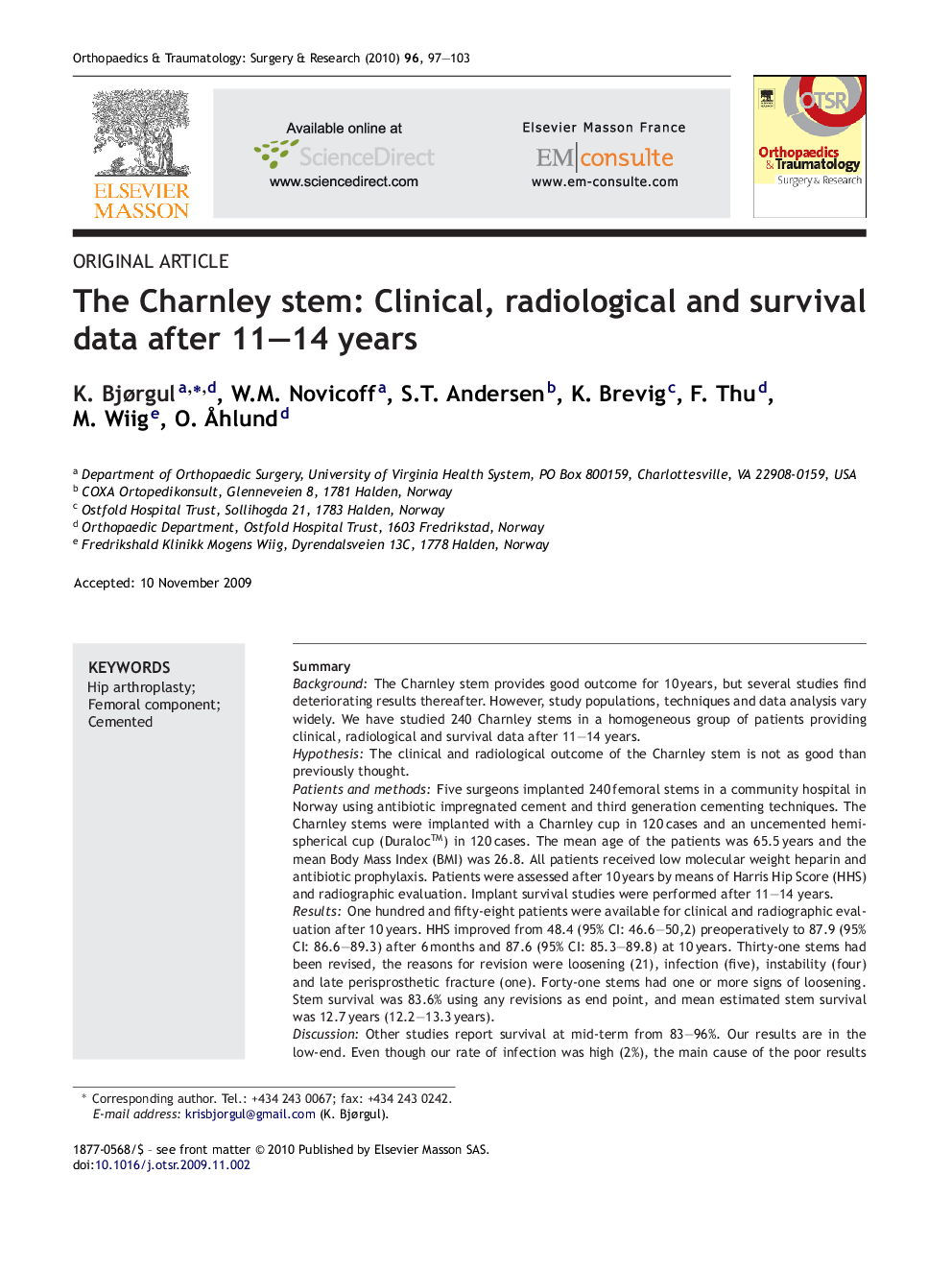| کد مقاله | کد نشریه | سال انتشار | مقاله انگلیسی | نسخه تمام متن |
|---|---|---|---|---|
| 4082489 | 1267641 | 2010 | 7 صفحه PDF | دانلود رایگان |

SummaryBackgroundThe Charnley stem provides good outcome for 10 years, but several studies find deteriorating results thereafter. However, study populations, techniques and data analysis vary widely. We have studied 240 Charnley stems in a homogeneous group of patients providing clinical, radiological and survival data after 11–14 years.HypothesisThe clinical and radiological outcome of the Charnley stem is not as good than previously thought.Patients and methodsFive surgeons implanted 240 femoral stems in a community hospital in Norway using antibiotic impregnated cement and third generation cementing techniques. The Charnley stems were implanted with a Charnley cup in 120 cases and an uncemented hemispherical cup (Duraloc™) in 120 cases. The mean age of the patients was 65.5 years and the mean Body Mass Index (BMI) was 26.8. All patients received low molecular weight heparin and antibiotic prophylaxis. Patients were assessed after 10 years by means of Harris Hip Score (HHS) and radiographic evaluation. Implant survival studies were performed after 11–14 years.ResultsOne hundred and fifty-eight patients were available for clinical and radiographic evaluation after 10 years. HHS improved from 48.4 (95% CI: 46.6–50.2) preoperatively to 87.9 (95% CI: 86.6–89.3) after 6 months and 87.6 (95% CI: 85.3–89.8) at 10 years. Thirty-one stems had been revised, the reasons for revision were loosening (21), infection (five), instability (four) and late perisprosthetic fracture (one). Forty-one stems had one or more signs of loosening. Stem survival was 83.6% using any revisions as end point, and mean estimated stem survival was 12.7 years (12.2–13.3 years).DiscussionOther studies report survival at mid-term from 83–96%. Our results are in the low-end. Even though our rate of infection was high (2%), the main cause of the poor results is aseptic loosening. We do not know the reason for this high-rate of loosening. As we believe that our technique is adequate and patient population average, we suspect that this rate of loosening is a characteristic of the implant. Results from this prospective cohort study add to the evidence that the Charnley stem should not be used hip arthroplasty unless patient life expectancy is less than 10 years.Level of evidenceLevel 2 prospective clinical study.
Journal: Orthopaedics & Traumatology: Surgery & Research - Volume 96, Issue 2, April 2010, Pages 97–103